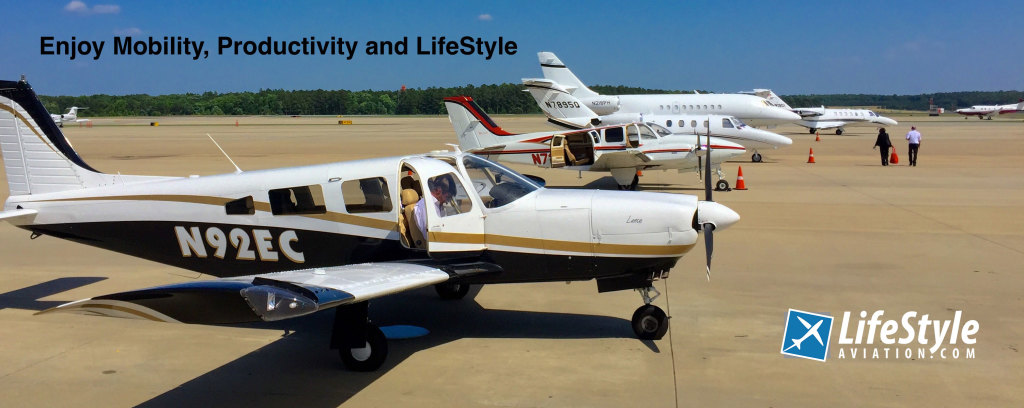
By John Armstrong, Founder and CEO of LifeStyle Aviation
We enjoy sharing our experiences with our clients and helping them to visualize what it will be like when they are enjoying aircraft like we enjoy aircraft…using them like cars to “go where they want when they want”.
Every week we are assisting clients that are considering aircraft for the first time to understand the benefits of personal aircraft travel, select aircraft and get started with an “Aviation LifeStyle“.
Many of the same questions come up during the process so I thought it would be good to summarize a few of them in a Q&A format.
Some of the initial questions that come up are below and you can click to see the answers: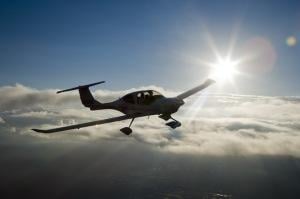
Is Flying Harder than Driving?
What are the benefits of personal air travel?
What are the basic requirements?
More questions with commentary:
How Fast do they go?
We select aircraft based on each client’s mission and pilot experience to get the best match of productivity and safety. Generally older trainers are too slow to be productive travel planes so we generally lean towards helping our clients get into faster modern aircraft that best suit their needs. A typical “First Aircraft” many people choose is a 150KT aircraft which means you fly at over 170MPH when compared to a car. This means you can get to destinations in typically 1/3rd what it takes to drive and many times a personal plane can beat the airlines to your destination because they go direct to where you want to go, can land at the airport that is closest to where you want to go and you have no “security check delays” or airline check-in requirements.
How far can they go?
Typically aircraft can fly longer than people prefer to sit. Most passengers would appreciate a break after about 3 or 4 hours. When you use a personal modern aircraft you can plan your trips like you would in a car…I’m going from here to there and when I get tired or need gas I can “pull over” and take a break. Its really that simple. There are many airports along any route and landing to take a break can make a trip quite nice. For example stopping off for lunch along your route can allow you to experience new areas and make the trip very pleasant.
Can I fly to the Bahamas or Canada? –
Absolutely! Most of the aircraft we offer and recommend do 140+ KTS so are true travel planes and you can explore the entire country and beyond. We can advise you on the procedures and requirements to fly to other countries. Its great fun and highly recommended. We’ll even give recommendations for places to go!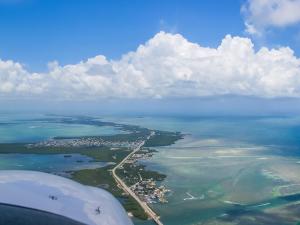
Should I buy or rent?
This is a great question and one that we help our clients determine with clarity. Aircraft ownership is a complete obvious answer in many cases and a definite bad idea in others. There are many factors that go into the consideration and there are many ownership options that should also be considered. We educate clients on leaseback opportunities that enjoy tax advantages and income potential, partnerships and our innovative DiamondShare program which can be the perfect fit for some. Generally speaking, if someone has already decided that they plan to own a plane “when they become a pilot” then we encourage them to acquire it ASAP even as an early stage student (under 10 hours). This approach works well and results in solid experience in that plane and they get to their goal sooner. This can be particularly productive when the buyer has business use potential. It allows them to enjoy what we call the “learn while you earn” approach to flying. Busy business owners benefit from this approach dramatically to enhance their personal and business lives immediately. Renting is good for training and generally does not work too well for trips that span days, weekends or weeks. As a result just about everyone that does become a pilot and wants to actually use a plane needs to find a way to get flexible access so they can actually achieve their usage goals. The ultimate answer to this question is crafted individually in a counselor type approach taking each client’s situation and goals into account.
Should I invest in a “modern plane” or a “traditional plane”?
The advancement of modern construction, materials, efficiency, safety, avionics and all things digital vs analog have totally transformed aircraft into two categories. The aircraft designed in the 1950’s – 1970’s that we refer to as “Traditional Aircraft”. Then there are the planes that are new 21st century designed and built craft. These planes are the ones that are unique and represent a new class. We refer to them as “modern planes”. The first big choice that new folks coming into the industry have to make is “modern or traditional”? We find the best way to help them is to simply show them what the modern planes are, how they are made, what advancements they incorporate and what that all means to them as pilots and passengers and for most folks the decision is quite easy…they want the modern advancements. Most of us don’t go shopping for cars and walk in and say do you have anything without airbags, antilock brakes or GPS? No we look for the advancements that make the vehicle safer, easier and more comfortable and convenient to use. Yes there is a budget consideration but when safety is our number one, two and three consideration it does not take long to understand the value of the new technology. Our approach to helping clients in the realm is we educate and they choose.
When will I be able to fly myself and my family around safely?
The answer to this comes in two parts. You’ll be legal to fly you and your family “around” as soon as you are a Private Pilot. This takes only 40 hours minimum of flight time and can be accomplished in 60 days 6 months depending on how you go about it. You’ll be able to truly enjoy the full freedom and mobility of an Aviation LifeStyle when you have access to a good aircraft and have advanced to the level of an instrument pilot. You are ready for that when you’ve flown as a Private pilot to gain cross country experience of 50 hours and obtain 40 hours of simulated or actual instrument time along with 15 of that being instrument flight instruction. If you use a plane for trips with an instructor or safety pilot the times are not hard to get built up. The instrument rating is a fun rating to get and gives you access to the full potential of an aircraft for traveling. Many of our training partners offer intensive IFR training that is complete in 10 days after you have the other pre-requisites. Personal note: I’m a big fan of intensive training for most people because I got my Private Certificate in 60 days in the summer as a college kid and got my instrument rating in a week later when I have the next level of experience. I got my twin rating in 2 days and my commercial rating in 2 days of intensive training programs. In my humble opinion more people should use the effectiveness and efficiency of specialized intensive training to achieve their goals. Those that focus on an end goal with clarity and commit to aircraft and training typically always succ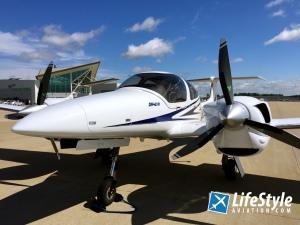 eed.
eed.
Is personal flying cost effective?
Answer: Absolutely it can be. The plane has to be fast enough and efficient enough to make the use of it productive. As an example the Diamond DA40 gets between 14-17 Statue Miles per gallon economy. You fly direct so the gas burned should be equal or less than driving a typical SUV to the same destination and you get there in 1/3rd the time.
Can I buy a high performance four or six place aircraft as my first plane?
The answer is “yes but…” only if all the circumstances are in place and it typically is not recommended. Specifically, we often have folks that want to buy the plane that best suits their mission but does not fit them as a pilot. In the early development stages of learning to fly and becoming an experienced pilot your needs and best fits are different than what may be your dream plane. Let’s take the example of a guy that has three kids and really wants a 6-place aircraft. It seems obvious that if he is going to buy a plane he should get a 6-place plane, right? Not so fast. If he is starting as a student he may be using the plane for training for the first year and his actual utility as a “family plane” may be limited. As it turns out insurance companies are very good at helping pilots understand what plane they belong in as “early stage pilots”. A six place plane is typically retractable, higher horsepower and more complex than what pilots usually start in. Insurance companies may not insure student pilots in such a plane or the rate will be expensive. The end result is someone that is determined to start there it will take longer to learn, spend more on insurance, fuel and maintenance and increase the cost of the process significantly while actually decreasing safety. With the right set of circumstances it can be done but still not the norm or best course for most people. What about the 4-place high performance planes you sell like Cirrus and Columbia’s? Generally speaking these are great step up aircraft when a pilot has achieved an instrument rating for the same reasons as just described. If you are a student pilot or early stage pilot, the very best way to enjoy the process of developing your aviation lifestyle is to start with the plane that best fits your pilot stage and when you have more experience to upgrade to the “next step” plane. We specialize in helping clients get off to the “right start” and then help them trade up as their skills, experience, mission and understanding of the value of flying evolves. It typically is a safe 4-place plane, then either a higher performance single engine or twin engine aircraft or six place plane as the next step and then a turbine then a jet.
Who can I talk to about using aircraft for an aviation lifestyle?
We encourage you to talk with those that have experience and have “been there and done that”. In fact, we’ve developed a way for you to do that called our LifeStyle Aviation Ambassador program.
The idea is simple but very powerful. There are many people that have been down this path of investing in an aviation lifestyle and using planes for business and pleasure. We have many happy clients that are enjoying a dream-like lifestyle. They are people that have years of experience in many realms of aviation and can provide a unique and valuable perspective. Those clients that have fully developed their Aviation LifeStyle and are keen to give back their experience and advise to the next generation of pilots coming in we designate as LifeStyle Aviation Ambassadors. They have agreed to share and provide advice by email and phone. They are not salespeople and have no incentive other than to encourage and share with new folks coming in as a way to “give back” to an industry they love. Typically we do email introductions and you can enjoy gaining their insights and answers to all your questions. Its a highly recommended step. Also in this realm we must warn folks to watch out for “old timers”. Old timers are folks that have many years of experience but no exposure to “modern aircraft”. They are steeped in aviation of the past and are very “credible”. They know a lot but sometimes their lack of exposure to the value, utility and safety of modern aviation technologies results in a perspective that gives unusual advice. They sometimes sound like a guy standing at the car lot telling you not to get the GPS, airbags, antilock brakes or other gizmos found in those newfangled “plastic airplanes”. If you hear someone that sounds similar to that we recommend you shift to someone that has experience in both modern and traditional aircraft for your advice.
What if it does not work out for me?
Learning to fly and being involved in aviation is usually one of the most interesting and enjoyable activities adults get involved in. Many times when clients are considering early stage purchases of planes way before they know much about flying they have to trust others to help guide them and it occurs as a really bid decision and a step into an unknown. In other words it can be a bit scary and folks worry well what happens if it does not work out for me? The answer is actually pretty simple and can relieve a lot of anxiety… If after you buy a plane and pursue your plans and goals and it does not “work out for you” … then we sell the plane. We stand ready to help any client and can easily get them out of their plane if it turns out to not be something they want to stick with. In other words the risk and loss is not nearly what it seems when considering the new direction initially.
Can I use a plane for business or get a tax deduction?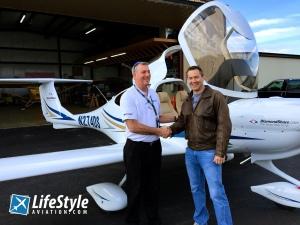
Absolutely! We help and encourage our clients to take full advantage of all possibilities in this realm. In fact, we spend as much time talking about airplanes as we do about taxes and ownership options. We can help many people enjoy ways to have their aircraft paid for, obtain tax advantages and use aircraft in their businesses. This is a very personalized discussion that needs to take into account each client’s situation and review all the possibilities. The end result of a properly structured ownership plan is clients typically enjoy nicer airplanes, fly more and financially are significantly better off. The opportunities are not limited only to business owners but we can explain the opportunities available to “W2” employees as well.
What about financing and insurance?
At LIfeStyle Aviation we provide everything turnkey to allow us to focus on providing each client a great buying, flying and owning experience. We will provide you economical and appropriate financing with each plane along with insurance quotes that have been shopped to the whole insurance market. You’ll enjoy economical rates and included service for all that you need in this realm. We want to help you focus on flying and enjoying the experience. Prudent use of financing and the right ownership structure and tax considerations can make an aircraft an amazingly cost effective investment. For example, our DiamondShare program is designed to have others cover your financing payments for you. Our leaseback programs have profit potential and tax advantages. Business use and tax deductibility can create more business potential for less than you may already be spending on business travel. We help clients figure out their particular economics and expected results.
Summary
Our airline system is choked with security delays and hassles. With the constant threat of terrorist many people would really rather not fly. With their ridiculous terms and fees airlines are making more money in change fees than moving passengers! Everyday it seems airlines are adding more fess for baggage, carry-ons, seat preferences, meals and more. Most people have to make connections and non-stop flights are rare further blunting the value of jet travel. Sadly, its not going to get better but its going to get worse. Car travel is not going to get better either until we have fully autonomous high speed vehicles. In the mean time we have more maniacs texting and drinking on our freeways than ever and it all happens with only inches between the vehicles. Traffic is always getting worse and the time it takes to travel depends on “what time you go”. In the context of all of this its our opinion that if most people knew how amazingly convenient, pleasant, efficient and powerful personal aviation is they would of course all want to enjoy traveling that way. The only thing that slows the adoption process down is they just don’t know about it! The aviation industry finds it difficult to reach into the heart of the population because they don’t have the marketing budgets that have the reach and scope. Without direct exposure from a friend or family member, someone may not know about personal flying and they may never even think to consider it as an option. So people continue year after year oblivious to the amazing difference we enjoy in the realm of personal aviation.
Modern aviation technology has completely changed the realm of personal mobility. Today, people are enjoying the modern personal aviation lifestyle like never before. They are learning to fly and completely side stepping the hassles of public transportation and highways. They are doing it in modern, automated, efficient aircraft that burn less fuel than their SUV to accomplish their personal and business goals and dreams.
We hope you’ll join us and let us help you “take off” into this new LifeStyle.
John
John Armstrong, is the Founder and CEO of LifeStyle Aviation
John’s adventures in aviation began as a teenager flying his Dad’s J-3 Cub off a grass strip. His passion for flying today is stronger than ever. He enjoys the modern aviation lifestyle and introducing people to its potential and value. John began LifeStyle Aviation to transform the aviation industry – one customer at a time. His unique approach to working with customers helps them identify which aircraft is best suited to meet their personal and professional goals. LifeStyle Aviation has the largest selection of fast, safe, modern aircraft with an extensive offering of late model, pre-owned “LifeStyle Aircraft”. Whether it’s new or pre-owned, John and his team helps clients determine the best airplane for their specific need and orchestrates a great aviation experience.
Learn more about the LifeStyle Aviation Team